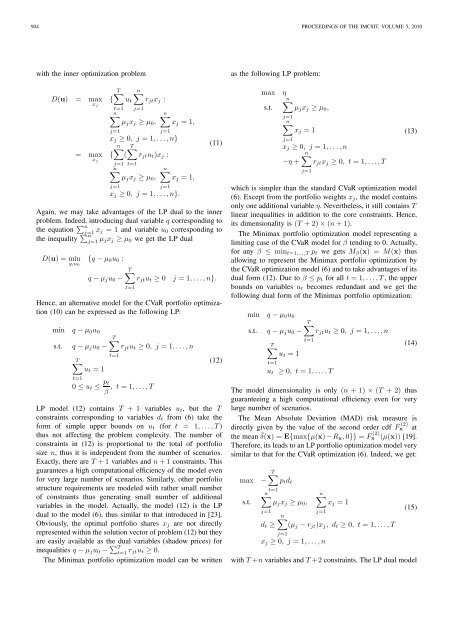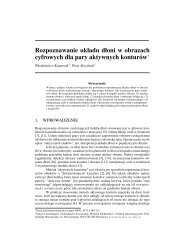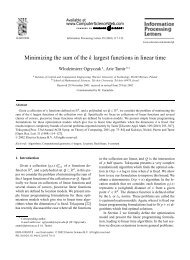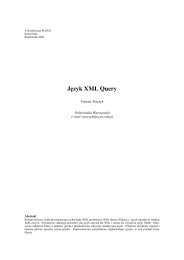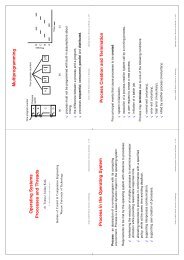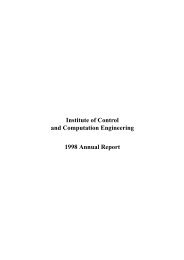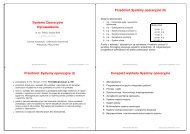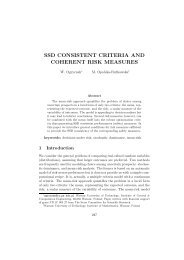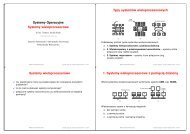Efficient Portfolio Optimization with Conditional Value at Risk
Efficient Portfolio Optimization with Conditional Value at Risk
Efficient Portfolio Optimization with Conditional Value at Risk
Create successful ePaper yourself
Turn your PDF publications into a flip-book with our unique Google optimized e-Paper software.
904 PROCEEDINGS OF THE IMCSIT. VOLUME 5, 2010<strong>with</strong> the inner optimiz<strong>at</strong>ion problemD(u) = maxx j{T∑ ∑nu t r jt x j :t=1j=1n∑µ j x j ≥ µ 0 ,j=1n∑x j = 1,j=1x j ≥ 0, j = 1,...,n}n∑ T∑= max { ( r jt u t )x j :x jj=1t=1n∑µ j x j ≥ µ 0 ,j=1n∑x j = 1,j=1x j ≥ 0, j = 1,...,n}.(11)Again, we may take advantages of the LP dual to the innerproblem. Indeed, introducing dual variable q corresponding tothe equ<strong>at</strong>ion ∑ nj=1 x j = 1 and variable u 0 corresponding tothe inequality ∑ nj=1 µ jx j ≥ µ 0 we get the LP dualD(u) = minq,u 0{q −µ 0 u 0 :q −µ j u 0 −T∑r jt u t ≥ 0 j = 1,...,n}.t=1Hence, an altern<strong>at</strong>ive model for the CVaR portfolio optimiz<strong>at</strong>ion(10) can be expressed as the following LP:min q −µ 0 u 0s.t. q −µ j u 0 −T∑r jt u t ≥ 0, j = 1,...,nt=1T∑(12)u t = 1t=10 ≤ u t ≤ p tβ , t = 1,...,TLP model (12) contains T + 1 variables u t , but the Tconstraints corresponding to variables d t from (6) take theform of simple upper bounds on u t (for t = 1,...,T)thus not affecting the problem complexity. The number ofconstraints in (12) is proportional to the total of portfoliosize n, thus it is independent from the number of scenarios.Exactly, there are T +1 variables and n+1 constraints. Thisguarantees a high comput<strong>at</strong>ional efficiency of the model evenfor very large number of scenarios. Similarly, other portfoliostructure requirements are modeled <strong>with</strong> r<strong>at</strong>her small numberof constraints thus gener<strong>at</strong>ing small number of additionalvariables in the model. Actually, the model (12) is the LPdual to the model (6), thus similar to th<strong>at</strong> introduced in [23].Obviously, the optimal portfolio shares x j are not directlyrepresented<strong>with</strong>inthe solutionvectorofproblem(12)buttheyare easily available as the dual variables (shadow prices) forinequalities q −µ j u 0 − ∑ Tt=1 r jtu t ≥ 0.The Minimax portfolio optimiz<strong>at</strong>ion model can be writtenas the following LP problem:max ηn∑s.t. µ j x j ≥ µ 0 ,j=1n∑x j = 1j=1x j ≥ 0, j = 1,...,nn∑−η + r jt x j ≥ 0, t = 1,...,Tj=1(13)which is simpler than the standard CVaR optimiz<strong>at</strong>ion model(6). Except from the portfolio weights x j , the model containsonly one additional variable η. Nevertheless, it still contains Tlinear inequalities in addition to the core constraints. Hence,its dimensionality is (T +2)×(n+1).The Minimax portfolio optimiz<strong>at</strong>ion model representing alimiting case of the CVaR model for β tending to 0. Actually,for any β ≤ min t=1,...,T p t we gets M β (x) = M(x) thusallowing to represent the Minimax portfolio optimiz<strong>at</strong>ion bythe CVaR optimiz<strong>at</strong>ion model (6) and to take advantagesof itsdual form (12). Due to β ≤ p t for all t = 1,...,T, the upperbounds on variables u t becomes redundant and we get thefollowing dual form of the Minimax portfolio optimiz<strong>at</strong>ion:min q −µ 0 u 0s.t. q −µ j u 0 −T∑u t = 1t=1T∑r jt u t ≥ 0, j = 1,...,nt=1u t ≥ 0, t = 1,...,T(14)The model dimensionality is only (n + 1) × (T + 2) thusguaranteeing a high comput<strong>at</strong>ional efficiency even for verylarge number of scenarios.The Mean Absolute Devi<strong>at</strong>ion (MAD) risk measure isdirectly given by the value of the second order cdf F x(2) <strong>at</strong>the mean ¯δ(x) = E{max{µ(x)−R x ,0}} = F x (2) (µ(x)) [19].Therefore,its leadstoan LP portfoliooptimiz<strong>at</strong>ionmodelverysimilar to th<strong>at</strong> for the CVaR optimiz<strong>at</strong>ion (6). Indeed, we get:max −s.t.T∑p t d tt=1n∑µ j x j ≥ µ 0 ,j=1d t ≥n∑x j = 1j=1n∑(µ j −r jt )x j , d t ≥ 0, t = 1,...,Tj=1x j ≥ 0, j = 1,...,n(15)<strong>with</strong> T+n variablesand T+2 constraints. The LP dual model


